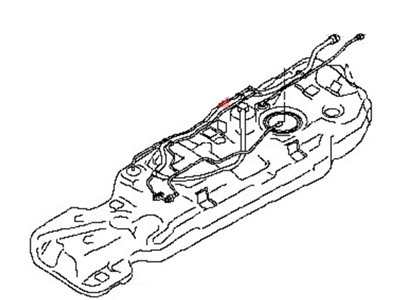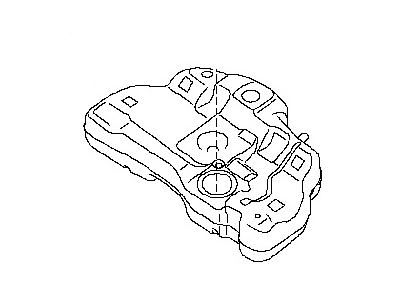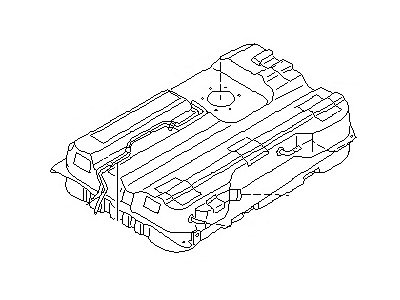×
- Hello
- Login or Register
- Quick Links
- Live Chat
- Track Order
- Parts Availability
- RMA
- Help Center
- Contact Us
- Shop for
- Nissan Parts
- Nissan Accessories

My Garage
My Account
Cart
Genuine Nissan Quest Fuel Tank
Gas Tank- Select Vehicle by Model
- Select Vehicle by VIN
Select Vehicle by Model
orMake
Model
Year
Select Vehicle by VIN
For the most accurate results, select vehicle by your VIN (Vehicle Identification Number).
12 Fuel Tanks found
Nissan Quest Fuel Tank Assembly
Part Number: 17202-3JW0A$1242.66 MSRP: $1504.43You Save: $261.77 (18%)Ships in 1-3 Business DaysNissan Quest Fuel Tank Assembly
Part Number: 17202-CK400$675.17 MSRP: $953.63You Save: $278.46 (30%)Ships in 1-3 Business DaysNissan Quest Fuel Tank Assembly
Part Number: 17202-ZF00A$675.17 MSRP: $953.63You Save: $278.46 (30%)Ships in 1-3 Business DaysNissan Quest Fuel Tank Assembly
Part Number: 17202-1JA3B$1242.66 MSRP: $1504.43You Save: $261.77 (18%)Ships in 1-3 Business Days
Nissan Quest Fuel Tank
This is a spare part meant for Nissan Quest cars that stores fuel and also has an electric fuel pump and fuel gauge sender. It has the responsibility of helping in controlling the fuel vapors from escaping within the Evaporative Emission Control System (EVAP). These kinds of tanks are frequently fabricated using either metal or plastic, with metal tanks normally being stamped out and then welded while the plastic tanks are tangibly molded from High Density Polyethylene (HDPE). Metallic tanks are more significant to the process of corrosion while the plastic tanks can crack on account of temperature variations and vibration. Fuel Tanks over the race car have gone to fuel cells many of which are made to be puncture-proof in case of impact to avoid spilling of fuel. Nissan Quest automobiles can be provided with the high capacity fuel tanks from military polymer with the increased fuel reserve and improved corrosion as compared to steel fuel tanks.
If you need any OEM Nissan Quest Fuel Tank, feel free to choose them out of our huge selection of genuine Nissan Quest Fuel Tank. All our parts are offered at unbeatable prices and are supported by the manufacturer's warranty. In addition, we offer quick shipping to have your parts delivered to your door step in a matter of days.
Nissan Quest Fuel Tank Parts Questions & Experts Answers
- Q: How to remove and install a fuel tank on Nissan Quest?A:Don't begin this procedure until the gauge indicates that the tank is empty or nearly empty. If the tank must be removed when full, siphon any remaining fuel from the tank prior to removal. Unless the vehicle has been driven to completely empty the tank, siphon out the residual fuel. Relieve the fuel pressure. Disconnect the cable from the negative terminal of the battery. Raise the vehicle and support it on jackstands. Remove the splash shield from the front of the fuel tank by prying out the plastic clips, detaching the mounting bolts, and removing the shield. Disconnect the fuel feed and return lines. Detach the electrical connector at the rear of the fuel tank. Loosen the hose clamps and detach the fuel tank filler hose and vapor hose. Remove the fuel tank skid plate if equipped. On 1998 and later California models, remove the evaporative emissions canister splash shield and disconnect the hose from the EVAP valve. Position a floor jack with a wood plank between the jack pad and the tank underneath the tank. After supporting the tank, remove the bolts retaining the fuel tank mounting straps, allowing the straps to swing out of the way. Slowly lower the jack, guiding the fuel tank past the muffler and tailpipe, then remove the tank. If necessary, remove and install the Fuel Pump or sending unit. For installation, reverse the removal process, and use clean engine oil to aid in pushing the fuel filler hose back onto the tank.
- Q: What precautions should be taken when handling a non-repairable fuel tank removed on Nissan Quest?A:The fuel tank installed in the vehicles covered is not repairable. If the fuel tank is removed from the vehicle, it should not be placed in an area where sparks or open flames could ignite the fumes coming out of the tank. Extra caution is needed inside a garage where a natural gas-type appliance is located, because the pilot light could cause an explosion.
Related Nissan Quest Parts
Browse by Year
2017 Fuel Tank 2016 Fuel Tank 2015 Fuel Tank 2014 Fuel Tank 2013 Fuel Tank 2012 Fuel Tank 2011 Fuel Tank 2010 Fuel Tank 2009 Fuel Tank 2008 Fuel Tank 2007 Fuel Tank 2006 Fuel Tank 2005 Fuel Tank 2004 Fuel Tank 2003 Fuel Tank 2002 Fuel Tank 2001 Fuel Tank 2000 Fuel Tank 1999 Fuel Tank 1998 Fuel Tank 1997 Fuel Tank 1996 Fuel Tank 1995 Fuel Tank 1994 Fuel Tank 1993 Fuel Tank
















